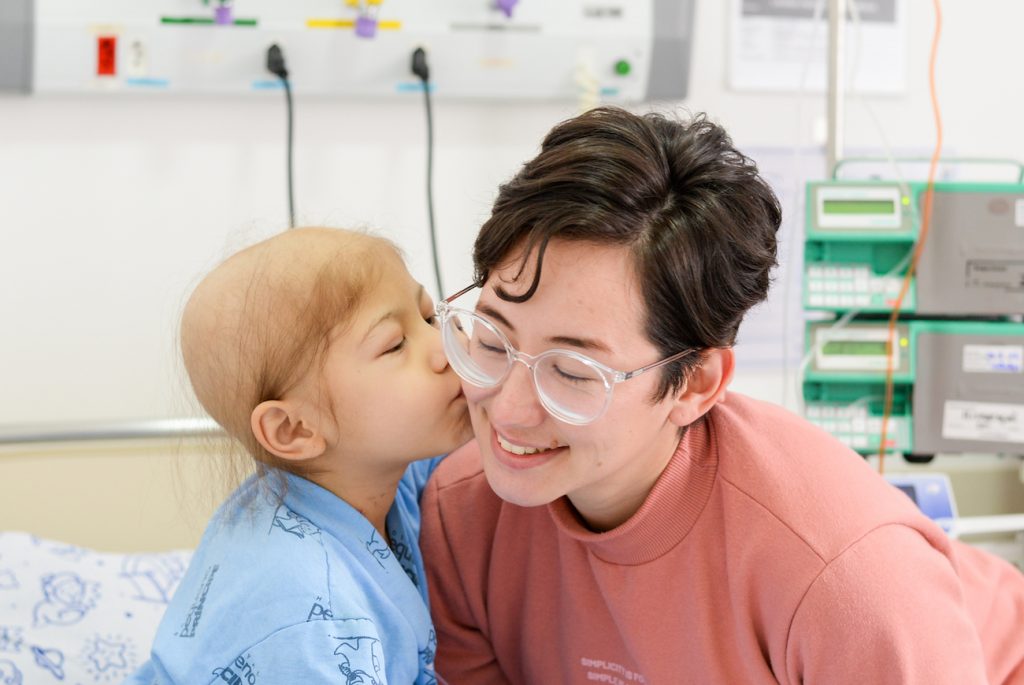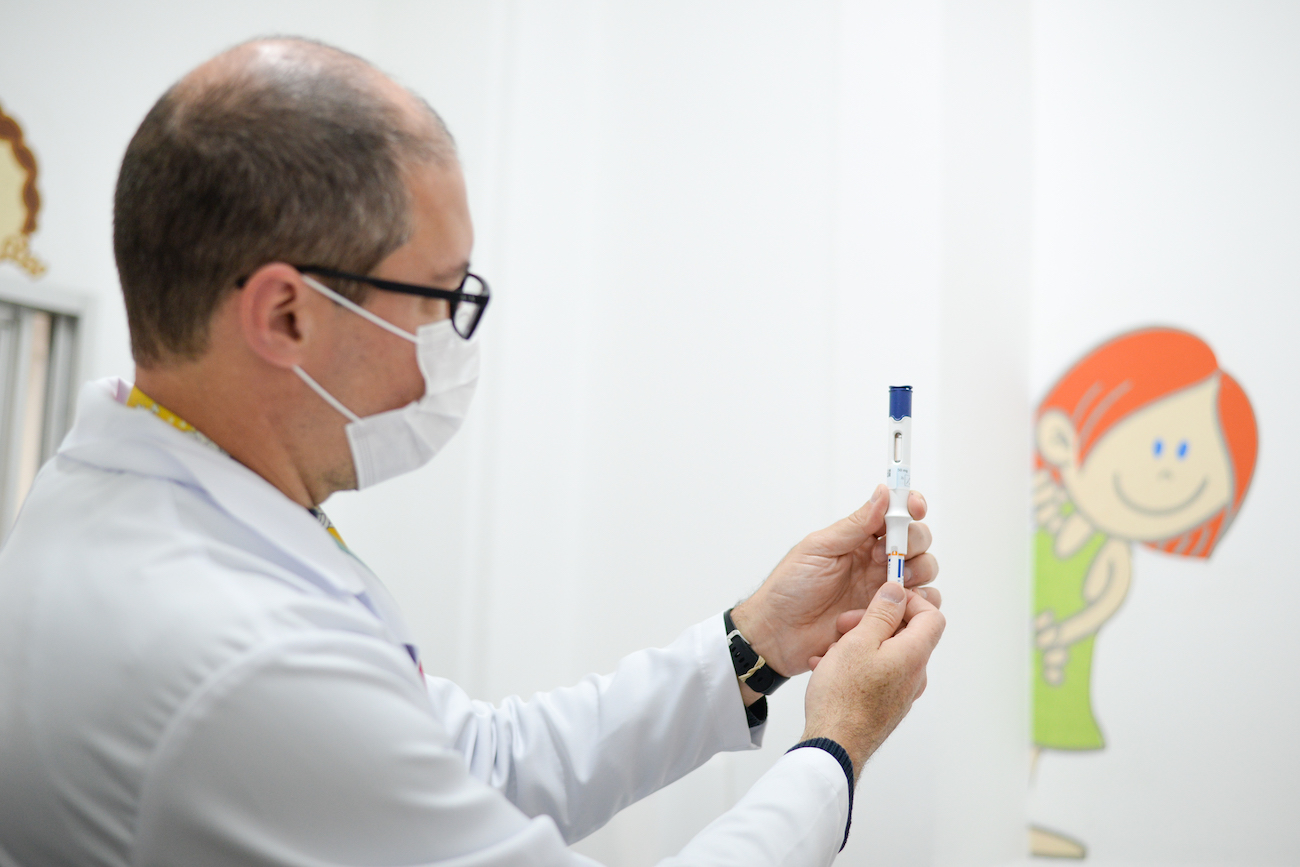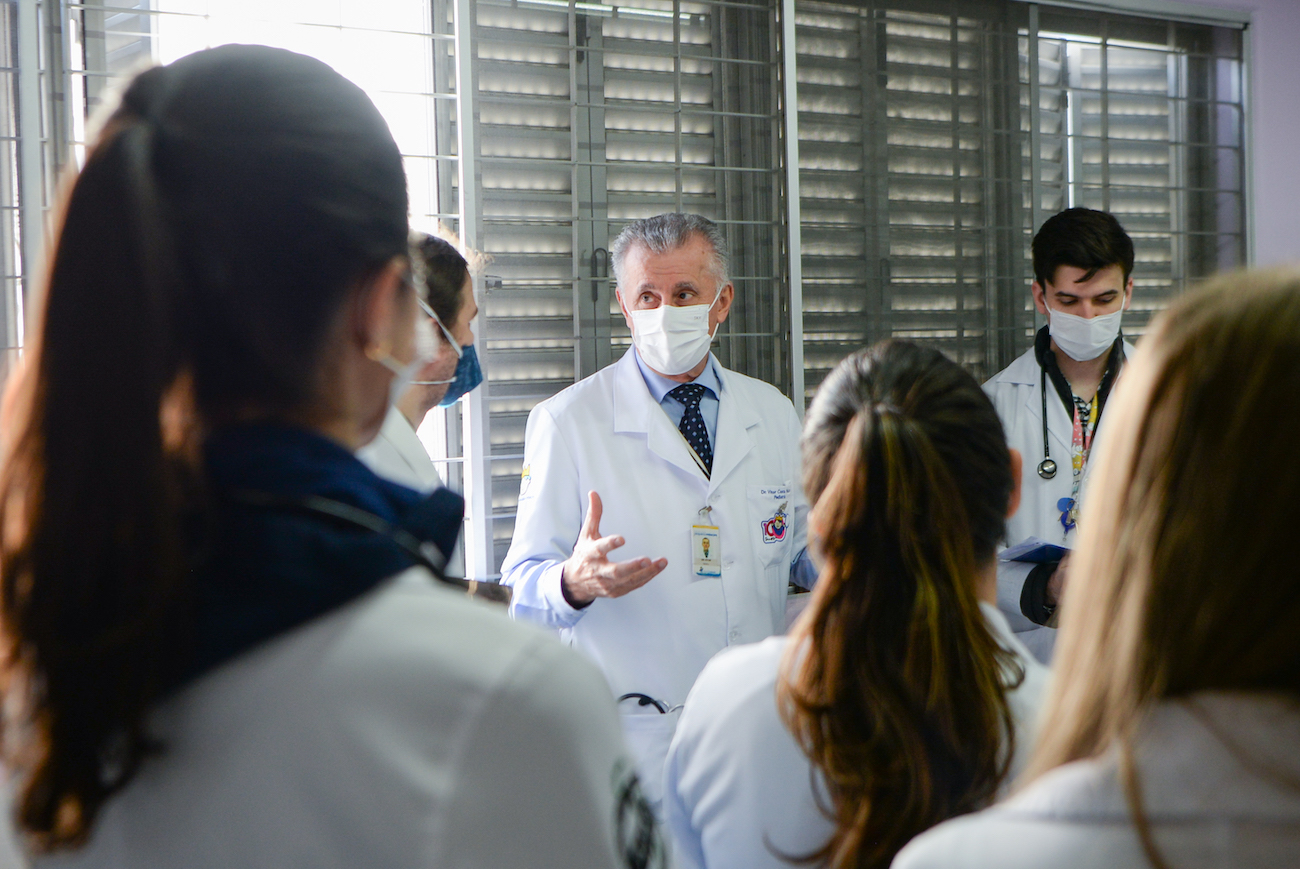Cost of the 10 most used drugs in the Hospital not fully covered by the Brazilian Public Health System exceeds US$ 500,000 per year
The list includes drugs intended for patients who need bone marrow transplants and who are undergoing cancer treatment

Lavínia is only 5 years old and is already facing a great battle. Diagnosed with a tumor in her femur, she has been undergoing treatment at the Pequeno Príncipe Hospital since early July. “She was always healthy, until one day her leg failed and she fell. We started to investigate; we went to several doctors until they referred us to Pequeno Príncipe. Here they did several tests and discovered the tumor on her little leg,” says her mother, Jéssica Kalaine Pierroti.
This tumor typifies 3% to 5% of all childhood neoplasms. Treatment is quite aggressive to prevent the tumor from spreading. One of the effective chemotherapy drugs used in the treatment, established by the protocol of the Latin American Group, can cause heart failure as a side effect. “To prevent heart conditions, we associate the drug dexrazoxane with chemotherapy, which the Hospital purchases with its own resources,” explains oncologist Gabriela Caus. Each patient needs eight vials, totaling more than US$ 2,000 for the part of the treatment that involves only this drug.

Dexrazoxane is just one of many high-cost drugs that the Hospital buys with its own resources so as not to leave behind patients treated by the Brazilian Public Health System (SUS, abbreviation in Portuguese). “With the support of companies, individuals, the Legislative and the Judiciary, we were able to purchase these drugs and offer more effective treatment. In this way, we offer a more resolute medicine, improve the quality of life of our patients and save lives,” emphasizes the executive director of the Hospital, Ety Cristina Forte Carneiro.
High cost
If we only consider the list of the ten most purchased, the Pequeno Príncipe invests around US$ 500,000 a year. This list includes drugs used by oncology patients and in the Bone Marrow Transplantation Service (BMT). “Although common, infections that affect transplant patients can be fatal and irreversible when not treated with the appropriate medication and at the right time. The drug options in this category offered by SUS and healthcare operators are limited,” reveals the head of the BMT Service, Carmem Bonfim.
When an infection is found in immunosuppressed patients who have recently been transplanted, treatments must begin immediately, so it can prevent unwanted fungi, viruses or bacteria from compromising the functioning of any vital organ or from spreading through the child’s body to make the infection irreversible, causing the death of the patient. “Many of these drugs are imported, and the purchase process takes longer. Therefore, having the medicine in the Hospital’s pharmacy for immediate start of treatment is essential,” informs the doctor.
Science and equity
The technical director of Pequeno Príncipe Hospital, Donizetti Dimer Giamberardino Filho, highlights that offering these medicines to patients, even if they have a high cost, is a choice that the institution makes because it believes in science and because it has values such as equity and solidarity in its DNA. “We are a hospital institution specializing in pediatrics, with an emphasis on highly complex diseases. To maintain the quality of care, there is a need to practice precision medicine, whether for diagnosis or treatment. In our values, in addition to defending science, we defend equity, solidarity and humanism. In this sense, investing in people represents our existential motive,” he declares.
Click below and learn more details about the story of Lavínia.
More
Only 8% of clinical trials with drugs are focused on pediatrics
Pequeno Príncipe Clinical Research Center contributes to increasing this percentage and to improving medical care for children and adolescents
Medical residency programs train 130 professionals per year
There are 11 residency programs and seven specialization programs, which contribute to the qualification of professionals dedicated to the care of children and adolescents









